二叉树的最近公共祖先
问题描述
给定一个二叉树, 找到该树中两个指定节点的最近公共祖先。
百度百科中最近公共祖先的定义为:
“对于有根树 T 的两个节点 p、q,最近公共祖先表示为一个节点 x,满足 x 是 p、q 的祖先且 x的深度尽可能大(一个节点也可以是它自己的祖先)。”
示例
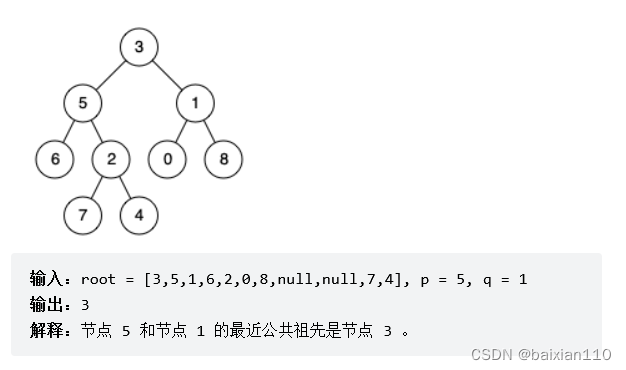
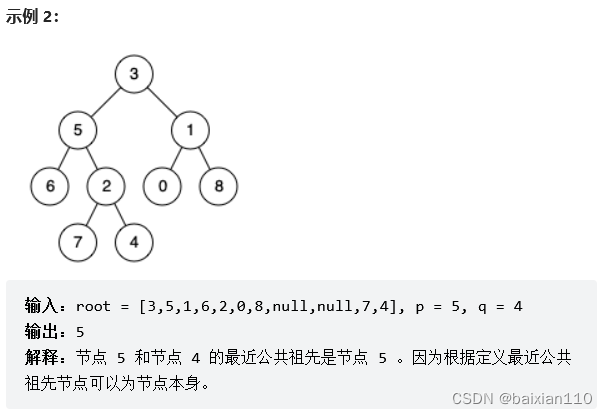
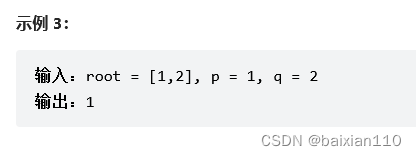
原题OJ链接
https://leetcode.cn/problems/lowest-common-ancestor-of-a-binary-tree/submissions/
解答代码
方法一
/**
* Definition for a binary tree node.
* public class TreeNode {
* int val;
* TreeNode left;
* TreeNode right;
* TreeNode(int x) { val = x; }
* }
*/
class Solution {
public TreeNode lowestCommonAncestor(TreeNode root, TreeNode p, TreeNode q) {
if(root == null){
//如果是一颗空树,那么也就没有什么祖先结点的说法了
return null;
}
if(root == p || root == q){
//p,q其中一个是根节点,那么祖先就是根节点
//这一行代码也是用来递归寻找p,q结点的 3
return root;
}
//往左子树去找p,q结点
TreeNode leftRet = lowestCommonAncestor(root.left,p,q);
//往右子树去找p,q结点
TreeNode rightRet = lowestCommonAncestor(root.right,p,q);
if(leftRet != null && rightRet != null){
return root;//说明pq分布分布在root的左右两边,那么他们的公共结点一定是root结点 1
}
else if(leftRet != null){
return leftRet;//说明pq都分布在根节点左边,那么一直往下找,无论pq谁先被找到谁就是祖先结点 2
}
else if(rightRet != null){
return rightRet;//说明pq都分布在根节点右边边,那么一直往下找,无论pq谁先被找到谁就是祖先结点
}
//最后一种情况,就是qp根本没有公共祖先
return null;
}
}
如下图就是上述代码 1 的情况
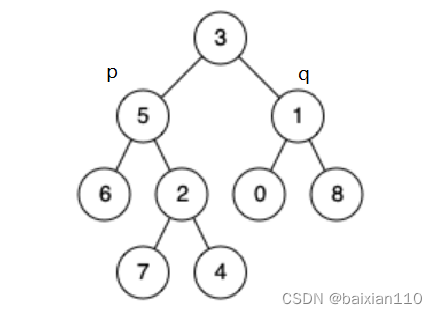
如下图就是上述代码 2 的情况
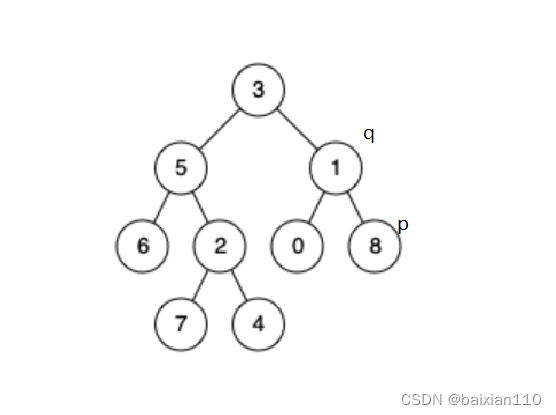 如下图就是上述代码 3 的情况
如下图就是上述代码 3 的情况
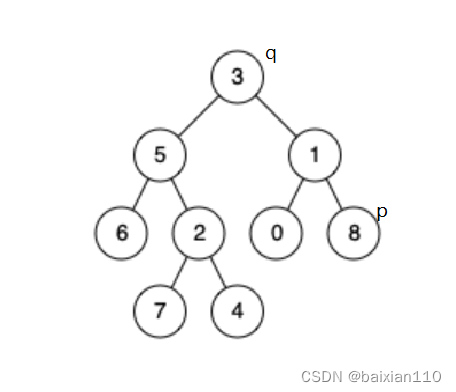
方法二
此外还可以先将根节点到q,p结点的路径寻找到,然后用链表存起来,然后就变成了寻找两个链表的公共结点的问题了。
但是这个思路有一个问题需要解决,就是如何去找路径根节点到某个结点的路径,方法就是利用栈,先将某个不确定是不是路径上的结点压入,然后遍历其子树发现没有目标结点则确认该结点不在路径上,就可以再次弹出。实际就是深度优先遍历
具体代码如下
/**
* Definition for a binary tree node.
* public class TreeNode {
* int val;
* TreeNode left;
* TreeNode right;
* TreeNode(int x) { val = x; }
* }
*/
import java.util.Deque;
import java.util.LinkedList;
class Solution {
public TreeNode lowestCommonAncestor(TreeNode root, TreeNode p, TreeNode q) {
Deque<TreeNode> stack1 = new LinkedList<>();
getPath(root,p,stack1);
Deque<TreeNode> stack2 = new LinkedList<>();
getPath(root,q,stack2);
//判断栈的大小
int length1 = stack1.size();
int length2 = stack2.size();
int length = 0;
if(length1>length2){
length = length1 - length2;
while(length != 0){
stack1.pop();
length--;
}
}
else{
length = length2 - length1;
while(length != 0){
stack2.pop();
length--;
}
}
//栈元素个数都一样了
while(!stack1.isEmpty() && !stack2.isEmpty()){
if(stack1.peek() != stack2.peek()){
stack1.pop();
stack2.pop();
}
else{
return stack1.peek();
}
}
return null;
}
public Boolean getPath(TreeNode root,TreeNode node,Deque<TreeNode> stack){
if(root == null || node == null){
return false;
}
stack.push(root);//根节点肯定在路径里面,第一个压入栈中,
if(root == node){
return true;
}
boolean ret1 = getPath(root.left,node,stack);//之后先把寻找过程中的结点都先压入栈中
if(ret1 == true){
return true;//往左边找找到了
}
boolean ret2 = getPath(root.right,node,stack);
if(ret2 == true){
return true;//往右边找找到了
}
//往左和往右都没找到,说明这个结点不在路径上,所以把这个点给弹出
stack.pop();
return false;
}
}